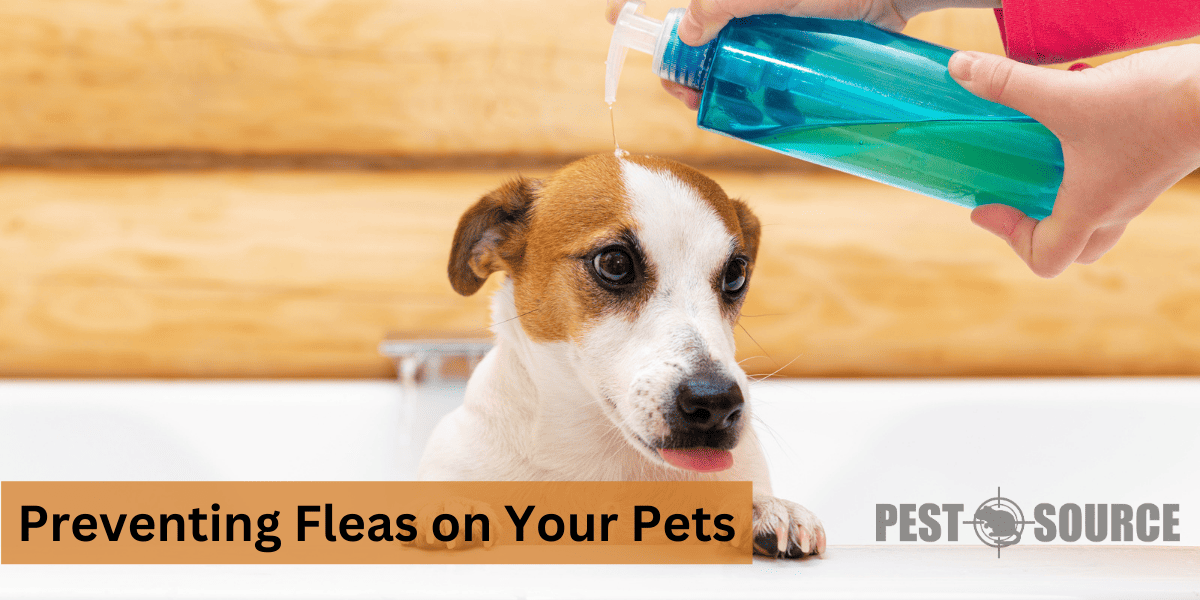When it comes to keeping your pets happy and healthy, preventing and controlling fleas should be a top priority. Fleas are small, wingless parasites that feed on the blood of animals and can cause a myriad of health issues, ranging from skin irritation to severe infections. As a responsible pet owner, it’s crucial to understand how fleas affect your pets, and what steps you can take to prevent and control these pesky parasites.
This comprehensive guide will provide you with everything you need to know about preventing fleas on your pets, including best practices for treating current infestations, and practical tips for maintaining a flea-free environment for your furry friends.
POINTS
- Regular preventative measures are essential for keeping fleas at bay, including administering veterinarian-recommended flea treatments, grooming pets with a flea comb, and maintaining a clean living environment for your pets.
- Flea infestations can have serious health consequences for pets, including allergies, skin irritations, anemia, and even the transmission of diseases like tapeworms.
- Paying close attention to your pet and its environment, such as vacuuming frequently, washing pet bedding, and maintaining outdoor areas, can help reduce the risk of flea infestations.
- Young pets, like puppies and kittens, are more susceptible to the negative effects of flea infestations and should be monitored closely and treated with age-appropriate flea prevention methods.
- Consult your veterinarian for guidance on the most effective flea prevention and treatment options for your specific pet’s needs, and don’t hesitate to seek professional help from a pest control expert if infestations persist.
What Are Fleas and Why Are They a Concern for Pet Owners?
Understanding the types of fleas that commonly affect pets is crucial for effective prevention and treatment. Below is a table categorizing the most common fleas, highlighting their unique characteristics and preferred hosts to help pet owners identify potential risks.
| Type of Flea | Characteristics | Common Hosts |
|---|---|---|
| Cat Flea (Ctenocephalides felis) | Most prevalent worldwide; can jump 8-12 inches; causes itching and allergies. | Primarily cats, though also found on dogs, humans, and other mammals. |
| Dog Flea (Ctenocephalides canis) | Less common than cat fleas; similar to cat fleas but prefers dogs. | Dogs, but can also infest cats and other animals. |
| Human Flea (Pulex irritans) | Prefers humans but will feed on pigs and pets; less common in homes with good hygiene. | Humans, pigs, dogs, and cats. |
| Sticktight Flea (Echidnophaga gallinacea) | Attaches firmly to hosts; can cause severe irritation and infection. | Birds, but will also infest cats, dogs, and other animals. |
What are Fleas?
Fleas are small, wingless insects that survive by feeding on the blood of their hosts, which can include mammals such as dogs, cats, and even humans. These tiny parasites have powerful legs that enable them to jump great distances relative to their size, making it easy for them to infest your home and pets. Their resilient and adaptive nature makes them challenging to get rid of, and a flea infestation can lead to irritating bites, allergic reactions, and the spread of diseases.
Are Fleas Common in Dogs and Cats?
Yes, fleas are a common problem for both dogs and cats. These pests are particularly drawn to cats and dogs due to their warm body temperatures and easily accessible skin – making them the ultimate hosts. Fleas reproduce at an incredible rate, meaning that even one or two fleas on your pet can rapidly lead to a full-blown infestation.
How do Animals Get Fleas?
Animals can get fleas through a variety of ways. They can pick them up directly from other infested animals or indirectly from an environment that has fleas. Environments where fleas thrive include gardens, pet beddings, carpets, and upholstery in your home. Fleas can also hitch a ride on your clothing or shoes to enter your home and find their way onto your pets.
What do Fleas on Dogs and Cats Look Like?
Fleas are usually dark reddish-brown and range in size from 1 to 3 millimeters. They’re not easy to spot since they can quickly move and hide in your pet’s fur.
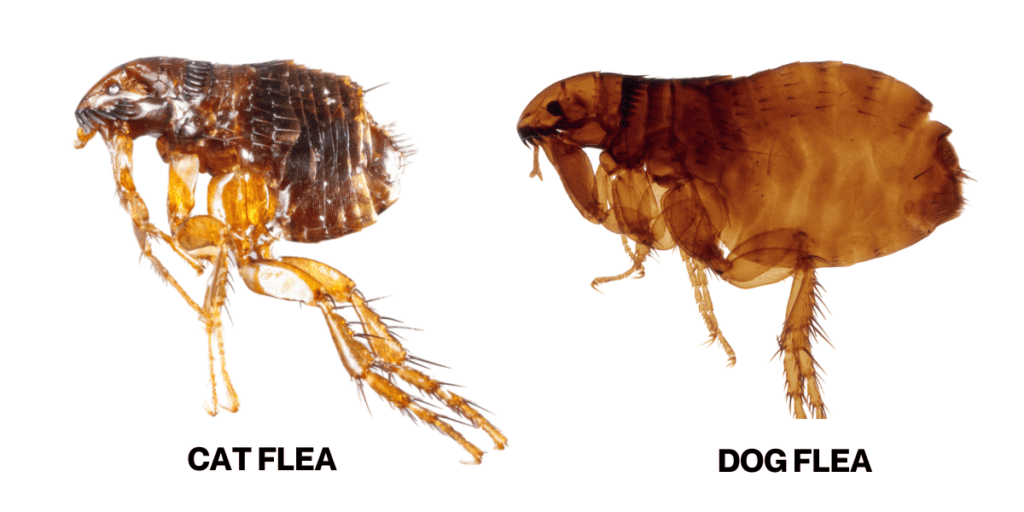
What Are the Signs of Flea Infestation on Pets?
Identifying the early signs of flea infestation can significantly improve the effectiveness of treatment and prevent further discomfort for your pet. The table below outlines key indicators that your pet may have fleas, along with the recommended actions to take upon detection.
| Sign of Fleas | Description | Recommended Action |
|---|---|---|
| Excessive Scratching | Pets may scratch more than usual due to irritation from flea bites. | Inspect your pet’s skin and fur using a flea comb; consult a vet if fleas are found. |
| Flea Dirt | Looks like small, black pepper-like specks on your pet’s skin or fur. | Use a damp paper towel to test for flea dirt; if it turns red, it’s flea feces. Seek flea treatment. |
| Red Patches or Bumps | Small bumps or redness on the skin, especially around the neck, belly, or base of the tail. | Contact your veterinarian for advice and possible flea treatment options. |
| Hair Loss | Loss of hair from excessive biting, scratching, or allergic reaction to flea bites. | Seek veterinary advice to treat both the fleas and the underlying skin condition. |
| Visible Fleas | Small, dark brown insects moving quickly through your pet’s fur. | Use a flea comb to capture and remove fleas, and consult with a veterinarian for treatment options. |
Monitoring your pet for these signs and taking prompt action can help keep them comfortable and prevent more serious health issues related to fleas.
How Do Fleas Affect Different Types of Pets?
Fleas can have varied effects on different types of pets, impacting their health and wellbeing in multiple ways. The following table provides a comparative overview of how fleas affect dogs, cats, puppies, and kittens, helping pet owners understand what to watch for and how to respond.
| Pet Type | Effects of Fleas | Symptoms to Watch For | Potential Health Risks |
|---|---|---|---|
| Dogs | Itching, scratching, and discomfort. | Flea allergy dermatitis, visible fleas or flea dirt. | Anemia, tapeworms, Flea Allergy Dermatitis (FAD). |
| Cats | Similar discomfort, potential for severe allergic reactions. | Excessive grooming, hair loss, flea dirt. | Anemia, tapeworms, severe skin irritation or infections. |
| Puppies | More severe health impacts due to their smaller size and developing immune system. | Lethargy, pale gums, reduced playfulness. | High risk of anemia, dehydration, stunted growth. |
| Kittens | Like puppies, highly susceptible to flea-induced anemia and other complications. | Rapid breathing, weakness, less engagement in activities. | Anemia, severe health complications if not treated promptly. |
What’s the Situation with Fleas on Dogs?
Fleas on dogs can cause a range of issues, from mild irritation to severe health problems. In addition to causing itching and scratching, fleas can transmit tapeworms and lead to anemia, particularly in puppies or older dogs with weaker immune systems. Flea bites can also trigger allergies in some dogs, leading to a condition called Flea Allergy Dermatitis (FAD), which results in severe itching and skin inflammation.
How do Fleas Affect Cats?
Fleas can have similar effects on cats as they do on dogs. They cause discomfort due to itching and can transmit tapeworms if ingested through grooming. Cats with flea allergies can also develop Flea Allergy Dermatitis, leading to severe skin conditions. Moreover, a heavy flea infestation, especially in kittens, can result in anemia, putting their health at risk.
Are Fleas a Concern for Puppies and Kittens?
Fleas are a significant concern for puppies and kittens, as these young animals are more susceptible to the negative effects of a flea infestation. Puppies and kittens can become anemic or develop other health complications due to fleas rapidly feasting on their blood. Their immune systems are not as developed as adult pets, making them more vulnerable to the diseases transmitted by fleas.
What Leads to Flea Infestations in Pets?
Why Does My Dog Keep Getting Fleas?
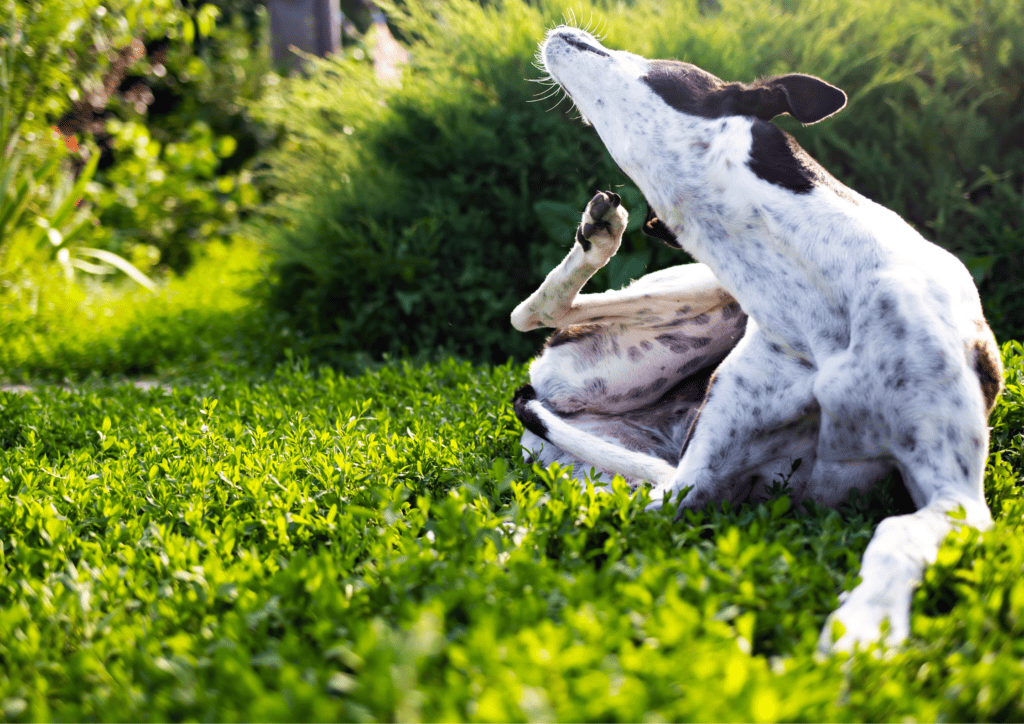
Dogs can repeatedly get fleas from various sources, such as their outdoor environment, contact with other infested animals, or from the fleas that persist in your home. Fleas can survive for several months without feeding and can lay dormant until they find a host. Leaving behind any fleas in your home can result in an ongoing cycle of infestations.
How Does an Outdoor Cat Get Fleas?
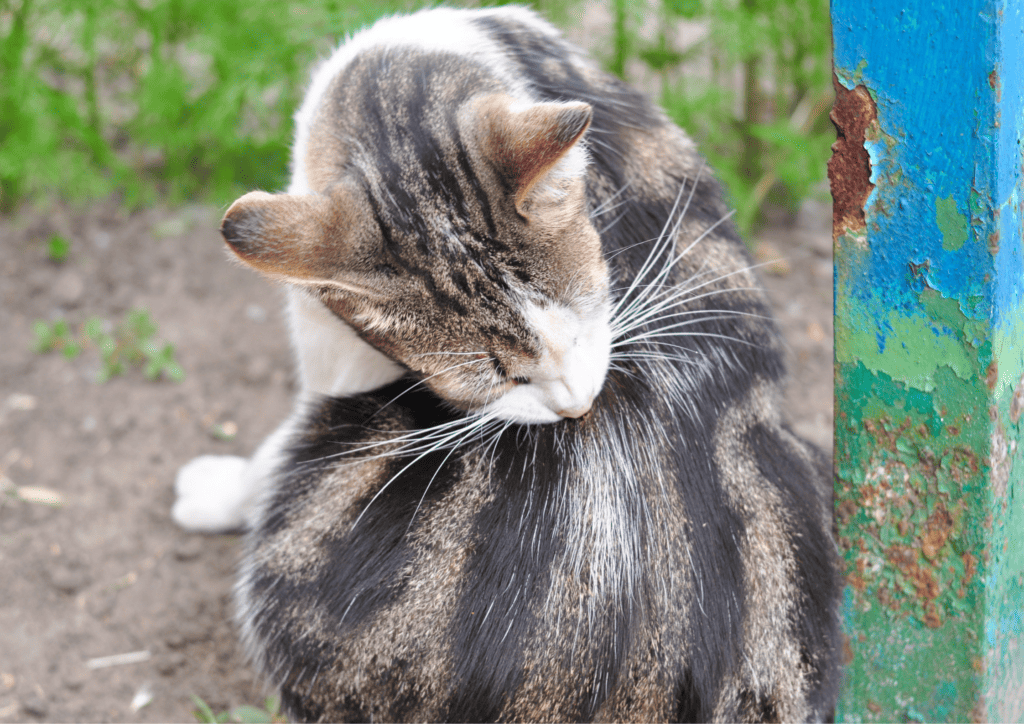
Outdoor cats can get fleas primarily from infested environments like gardens or yards, or by direct contact with other animals carrying fleas. Fleas can jump from one host to another or attach to your cat’s fur as they brush past foliage or contaminated surfaces.
What Causes Fleas on Dogs?
Fleas can infest dogs from various sources, such as infested outdoor environments, coming into close contact with other animals carrying fleas, or even from your home if fleas have laid dormant in carpets, furniture, or pet bedding. Fleas are resourceful parasites and will seize any opportunity to find a warm host like your dog.
How Can Pet Owners Prevent Flea Infestations?
How to Prevent Fleas in General?
To prevent fleas, pet owners should take a multi-faceted approach, focusing on both their pets and their environment. Here are some general tips to prevent fleas:
| Preventive Measure | Method | Frequency | Notes |
|---|---|---|---|
| Grooming with Flea Comb | Physical removal of fleas | Weekly or as needed | Especially useful after walks or contact with other animals. |
| Wash Pet Bedding | Hot water wash | Weekly | Kills fleas and larvae; include blankets and toys. |
| Vacuum Home | Focus on carpets, upholstery, and pet areas | At least once a week | Immediately dispose of vacuum bags or clean vacuum containers. |
| Flea Preventative Treatments | Topical, oral, or collar | Monthly or as recommended by veterinarian | Choose vet-recommended products suitable for pet’s species and weight. |
| Clean Outdoor Environment | Keep lawn trimmed, remove debris | Regularly | Reduces flea habitat and breeding grounds. |
| Regular Health Checks | Vet visits | Annually or as recommended | Early detection and prevention of fleas and other health issues. |
Implementing these measures consistently can significantly reduce the risk of flea infestation, ensuring your pets remain happy and healthy.
Best Ways to Prevent Fleas on Dogs?
- Use a monthly flea preventative medication as recommended by your veterinarian.
- Bathe your dog using a flea shampoo or a pet-safe shampoo that can help deter fleas.
- Invest in a flea collar for additional protection.
- Keep your dog away from areas with known flea infestations or potentially infected animals.
- Regularly inspect your dog for signs of fleas and treat any infestation promptly.
How to Prevent Fleas on Cats?
- Apply a monthly flea preventative treatment designed for cats, ensuring to follow the veterinarian’s guidance.
- Groom your cat regularly, using a flea comb to check for any fleas.
- Maintain your cat’s living environment clean and free of fleas.
- If your cat is an outdoor cat, consider providing a flea collar or using other flea deterrent products.
- Monitor your cat for signs of fleas and treat any infestation as soon as possible.
How to Prevent Fleas on Puppies and Kittens?

- Consult your veterinarian for appropriate flea preventative measures suitable for your puppy or kitten’s age and weight.
- Keep puppies and kittens away from other animals that could potentially be infested with fleas.
- Regularly groom your young pet using a soft brush or flea comb to check for fleas.
- Maintain a clean living environment and wash their bedding often.
- Monitor puppies and kittens closely for signs of fleas or any health issues resulting from a possible infestation.
What are the Strategies for Controlling Fleas on Pets?
Choosing the right flea treatment product is essential for effectively managing and eliminating fleas from your pets. The table below compares various flea treatment products, highlighting their application method, active ingredients, and any specific considerations for use on dogs or cats, to help you make an informed decision based on your pet’s needs and lifestyle.
| Product Type | Application Method | Active Ingredients | Suitable for Dogs/Cats | Considerations |
|---|---|---|---|---|
| Topical Spot-On | Applied directly to the skin | Fipronil, Imidacloprid, Selamectin | Both | Select according to pet’s weight; not for very young pets |
| Oral Medication | Pill or chewable | Nitenpyram, Spinosad | Both | Quick effectiveness; some products also prevent heartworm |
| Flea Collars | Worn around the pet’s neck | Deltamethrin, Flumethrin | Both | Duration of effectiveness varies; some are waterproof |
| Flea Shampoos | Bathing | Pyrethrins, Permethrin (dogs only) | Both (note restrictions) | Immediate effect; not long-lasting |
| Flea Sprays | Sprayed onto fur and bedding | Fipronil, Etofenprox | Both | Can be used on bedding and other surfaces; variable duration |
| Flea Powders | Applied to pet’s fur | Tetrachlorvinphos, Diatomaceous earth | Both | Less common; may require frequent application |
When selecting a flea treatment product, it’s crucial to consider your pet’s species, age, weight, and health status, as well as the presence of other pets or children in the home, to ensure safety and effectiveness.
How to Control Fleas on Dogs?
- Apply a veterinarian-approved flea treatment or medication, following the recommended dosage and application instructions.
- Regularly groom your dog with a flea comb to remove existing fleas and monitor their progress.
- Bathe your dog using flea shampoo or a pet-safe shampoo to help control and prevent flea infestations.
- Treat your dog’s surroundings, including bedding and play areas, to eliminate fleas and their eggs.
- Consult your veterinarian for further advice and treatment options if needed.
Controlling Fleas on Cats?
- Administer a cat-safe flea treatment, strictly adhering to the veterinarian’s recommendations.
- Groom your cat frequently with a flea comb to remove fleas and keep an eye on their condition.
- Keep your cat’s environment clean, vacuuming carpets and washing their bedding regularly to get rid of fleas and eggs.
- If your cat spends time outdoors, consider providing a flea collar or using other flea deterrent products.
- Consult your veterinarian if the infestation persists or worsens, as they may suggest alternative treatments.
Flea Control Measures for Puppies and Kittens?
- Talk to your veterinarian about appropriate flea control measures for young pets, including age and weight-appropriate treatments.
- Groom your puppy or kitten with a soft brush or flea comb, to remove any fleas and monitor their condition closely.
- Keep their living environment clean, frequently washing bedding and toys in hot water to eliminate fleas and their eggs.
- Avoid exposing puppies and kittens to other animals that could carry fleas.
- Reach out to your veterinarian if the infestation doesn’t improve or if you’re worried about your young pet’s health.
What are the Best Flea Prevention Methods for Pets?
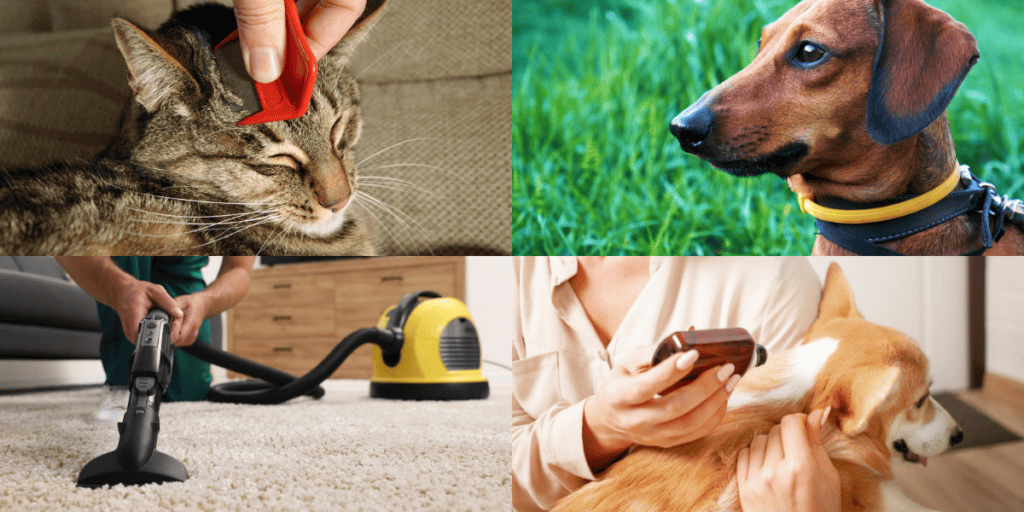
Exploring Flea Prevention for Dogs, Cats, Puppies, and Kittens
Flea prevention methods should be tailored to the specific needs of your pet, considering their age, size, and lifestyle. Some of the best flea prevention methods include:
- Monthly topical flea treatments or oral medications.
- Flea collars designed for the specific needs of dogs or cats.
- Regular grooming using a flea comb.
- Environmental management, such as regular cleaning and vacuuming.
- Appropriate flea prevention strategies for outdoor pets.
Best Way to Prevent Fleas and Ticks on Dogs?
Combining monthly topical or oral preventative treatments with a tick and flea collar is an effective way to protect your dog from both fleas and ticks. Additionally, regular inspections of your dog’s coat, especially after spending time outdoors in tick-prone areas, can help identify and remove pests early on.
Best Way to Control Fleas on Dogs?
The best way to control fleas on dogs is through a combination of preventative treatments, regular grooming with a flea comb, and proper environmental management. This includes treating your dog’s bedding and living areas with flea-killing products, as well as keeping outdoor spaces tidy and pest-free.
Best Way to Prevent Fleas on Cats?
Preventing fleas on cats involves using monthly preventative treatments designed for cats, regular grooming with a flea comb, and maintaining a clean environment both indoors and outdoors. For outdoor cats, consider providing a flea collar or using other flea deterrent products to minimize the risk of an infestation.
Environmental Flea Control Strategies
Effective flea control involves not only treating your pets but also managing their living environment to prevent flea infestations. The table below offers strategies for environmental flea control, detailing actions homeowners can take to eliminate fleas from both indoor and outdoor spaces, thereby protecting both pets and family members from these pests.
| Area | Strategy | Action Steps | Frequency/Notes |
|---|---|---|---|
| Indoors | Vacuuming | Focus on carpets, furniture, and pet sleeping areas. | At least once a week; immediately dispose of or clean vacuum contents. |
| Washing | Bedding, blankets, and pet toys in hot water. | Weekly to kill fleas and eggs. | |
| Flea Treatments | Use of sprays, powders, or foggers specifically designed for indoor use. | As needed, following product instructions carefully to ensure pet safety. | |
| Outdoors | Lawn Care | Mow grass regularly and remove debris. | Regular maintenance reduces flea habitats. |
| Wildlife Control | Discourage wildlife that may carry fleas (e.g., raccoons, squirrels) by securing trash cans and limiting access to food. | Ongoing; wildlife can be a significant source of fleas. | |
| Chemical Treatments | Applying flea-preventative products to outdoor areas. | Use as directed, considering pet and human safety. |
How to Address Current Flea Infestations in Pets?
How to Stop Fleas on Dogs and Cats?
- Immediately consult with your veterinarian to determine the most appropriate flea treatment for your pet.
- Apply the recommended flea treatment according to the veterinarian’s instructions and dosage guidelines.
- Regularly groom your pet using a flea comb to help remove fleas and their eggs.
- Thoroughly clean and vacuum your home, focusing on pet bedding, carpets, and any areas frequented by your pet.
- Seek professional help from a pest control expert if the infestation persists, despite your efforts.
How to Keep Fleas off My Dog?
In addition to preventing fleas, it’s essential to follow a routine of grooming, securing a clean living environment, and using flea repellent products. Providing your dog with a flea collar or using natural flea deterrents, such as essential oils (only if safe for your pet), can also help keep fleas off your dog.
Measures to Take When You Find Fleas on Your Pet’s Belly?

- Contact your veterinarian for guidance on the right flea treatment for your pet.
- Apply the recommended flea treatment promptly and follow the instructions closely.
- Continue to groom your pet and monitor their belly area for any remaining fleas or signs of irritation.
- Clean and treat your pet’s living environment, including bedding, to eliminate any fleas or larvae.
Are there any other effective measures for Pet Flea Control?
Exploring Other Strategies for Flea Prevention in Pets?
Natural flea prevention methods, such as diatomaceous earth (DE) or herbal flea sprays, can be used alongside conventional treatments, provided that they’re safe for your pet. It’s crucial to consult with a veterinarian before using these methods to ensure their safety and effectiveness.
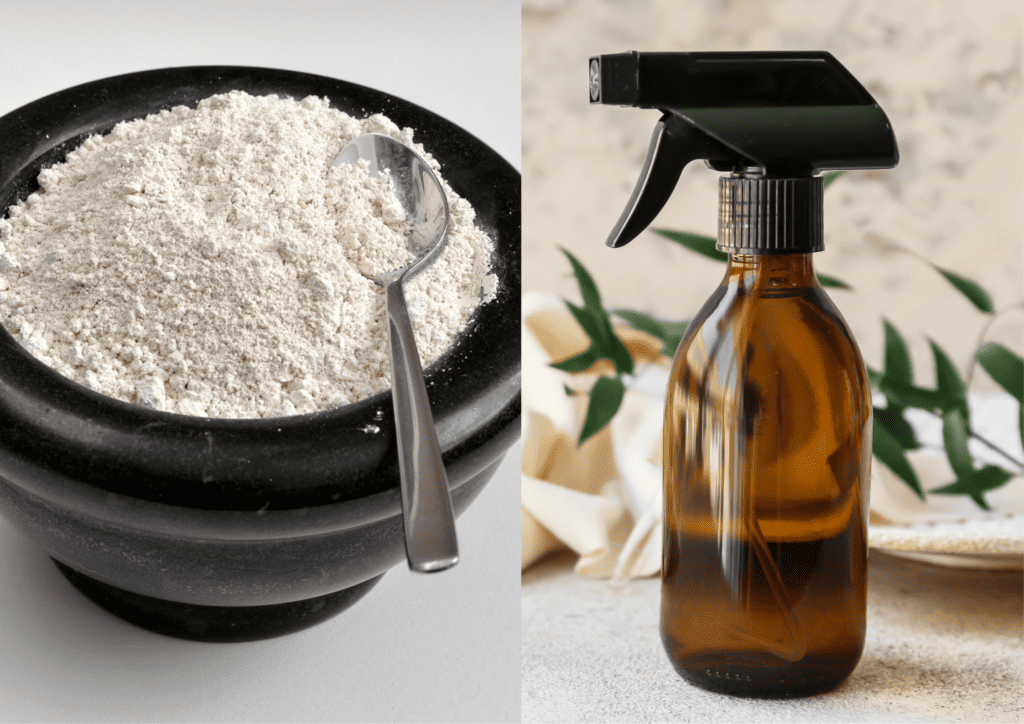
What to Do if Your Pet Keeps Getting Fleas?
If your pet continues to experience flea infestations, having a clear and concise action plan is crucial for efficiently addressing the issue and ensuring your pet’s health and comfort. The table below serves as a checklist for pet owners facing a flea infestation, outlining immediate and long-term steps to eliminate fleas from both pets and their environment.
| Step | Action | Details | Timing |
|---|---|---|---|
| 1 | Consult a Veterinarian | Get professional advice on the most suitable flea treatment for your pet. | Immediately upon noticing signs of fleas |
| 2 | Apply Flea Treatment | Use veterinarian-recommended flea treatment on your pet. | As advised by the veterinarian |
| 3 | Clean Pet’s Living Areas | Vacuum carpets, wash bedding, and clean all areas where your pet spends time. | Simultaneously with flea treatment; repeat regularly |
| 4 | Use Environmental Flea Control | Treat your home and yard with flea control products. | According to product instructions; may require multiple applications |
| 5 | Monitor Pet’s Health | Watch for signs of flea allergy dermatitis or other flea-related health issues. | Ongoing after initial treatment |
| 6 | Prevent Future Infestations | Implement regular preventive measures, including monthly flea treatments and environmental cleanliness. | Starting immediately after the infestation is under control; ongoing |
This checklist can guide you through the process of dealing with a flea infestation, emphasizing the importance of both immediate action and ongoing prevention to keep your pets healthy and your home flea-free.
How to Avoid Fleas on Dogs and Cats?
To avoid fleas, focus on consistent preventative measures for both your pet and their environment. Regular grooming, administering timely flea treatments, maintaining a clean and pest-free living space, and seeking professional help if necessary, are all essential steps to avoid fleas on your pets.
Conclusion: Maintaining a Flea-Free Environment for Pets
Recap on Prevention and Control of Fleas on Pets
Preventing and controlling fleas on pets require a proactive and vigilant approach. Regular grooming, appropriate preventative treatments, and maintaining a clean living environment are all essential components of effective flea prevention.
Importance of Regular Flea Checks and Preventative Measures
Implementing regular flea checks and preventative measures not only benefits your pet’s health and comfort but also helps maintain a clean and pest-free home environment. Protect your pets and your home from the irritating and potentially dangerous consequences of flea infestations by adopting a comprehensive strategy for flea prevention and control.

